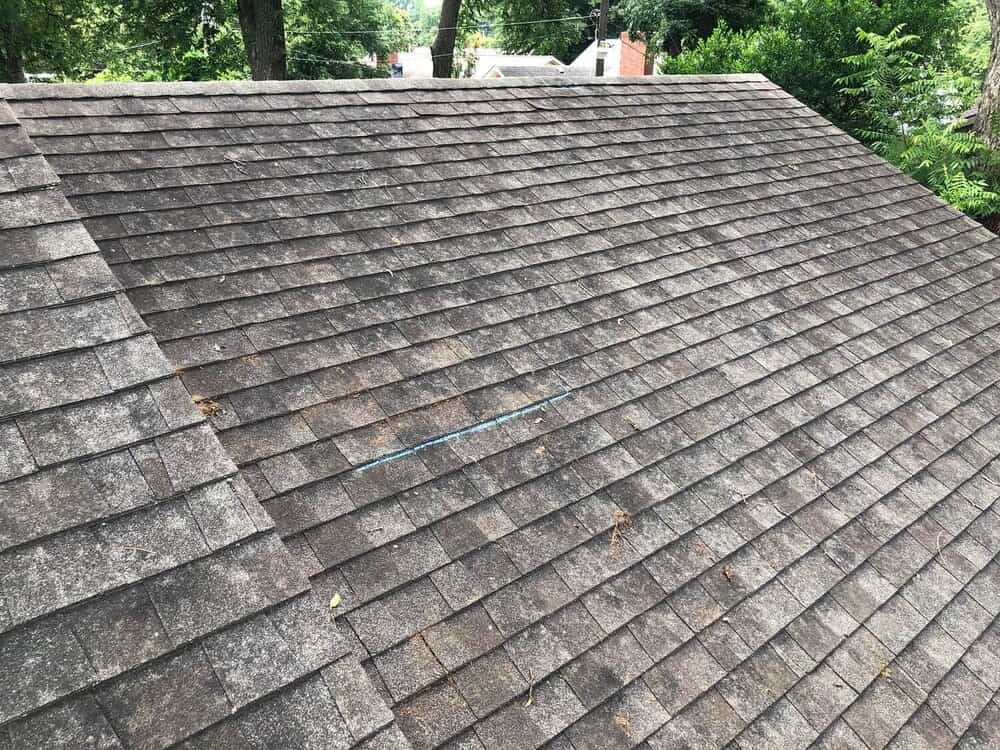
What Are the Black Marks on My Roof?
Here in the great state of Oklahoma, it’s common to see roofs with unsightly black marks that can range from small spots to large streaks. The common name for these black marks is blue-green algae. We won’t even attempt to talk about its scientific name; I can’t even spell it without looking—much less pronounce it. Lol! How common these black marks are will vary from region to region depending upon the humidity level of the area. The build-up of the blue algae will be most prevalent on the slopes of the roof which usually don’t receive that much direct sunlight.
A newly installed roof doesn’t initially have these black marks. That’s because shingle manufacturers blend copper granules into the shingle. The copper prohibits any kind of algae build-up. Unfortunately, over time, the copper runs out of life. This generally happens somewhere around the 10–15-year mark. At that point, there is nothing constraining algae growth.
There are a few things that can be done to prevent algae growth. These include:
- Trim trees back to allow more sunlight to come into contact with the roof.
- Clean all debris off the roof.
- Keep gutters clean to prevent water back-up
- Prevent water from consistently dripping on a roof.
The key with all four of these is once shingles become wet, they need to dry out quickly. The longer they are wet the more prone they are to algae growth. Not letting rain from that second-story roof flow onto the first-story or allowing the second-story downspout to pour directly on a roof is critical to preventing algae growth. It doesn’t mean you’ll completely prevent the growth of algae, but these measures should help.
Now, what if your roof already has blue-green algae? Some have suggested using bleach and water, but the issue with this is that when you spray the roof, it becomes slick and starts to become a safety hazard. Because of this safety hazard, we cannot recommend you try to clean the roof yourself. Here are 3 safe options:
- some companies specialize in removing this kind of algae from roofs. If you decide to have a company, come out, and make sure they have the proper liability and workers’ compensation insurance.
- In Oklahoma, we receive many hailstorms over a 10–15-year period. If you have black markings on your roof, it might be a good time to have a roof inspection done. If wind or hail damage is present, it’s possible your insurance company could pay for a new roof.
- If you’re one of those organized people who have all the information from when your roof was first installed, you can see if the algae have formed during the warranty period. If it has, contact your contractor or the manufacturer to discuss your options.
Next time you have your roof replaced, look for the fine print on the algae-resistant warranty. Depending on the brand of shingle, the type of warranty can range from 10-15 years. If blue-green algae are present during the warranty period, the shingle manufacturer will generally pay to have the roof cleaned or possibly replaced if the cleaning was ineffective.
We hope this post has provided you with some insight into this common problem. You might start becoming more and more aware of roofs with blue-green algae—now that you know what it is.
